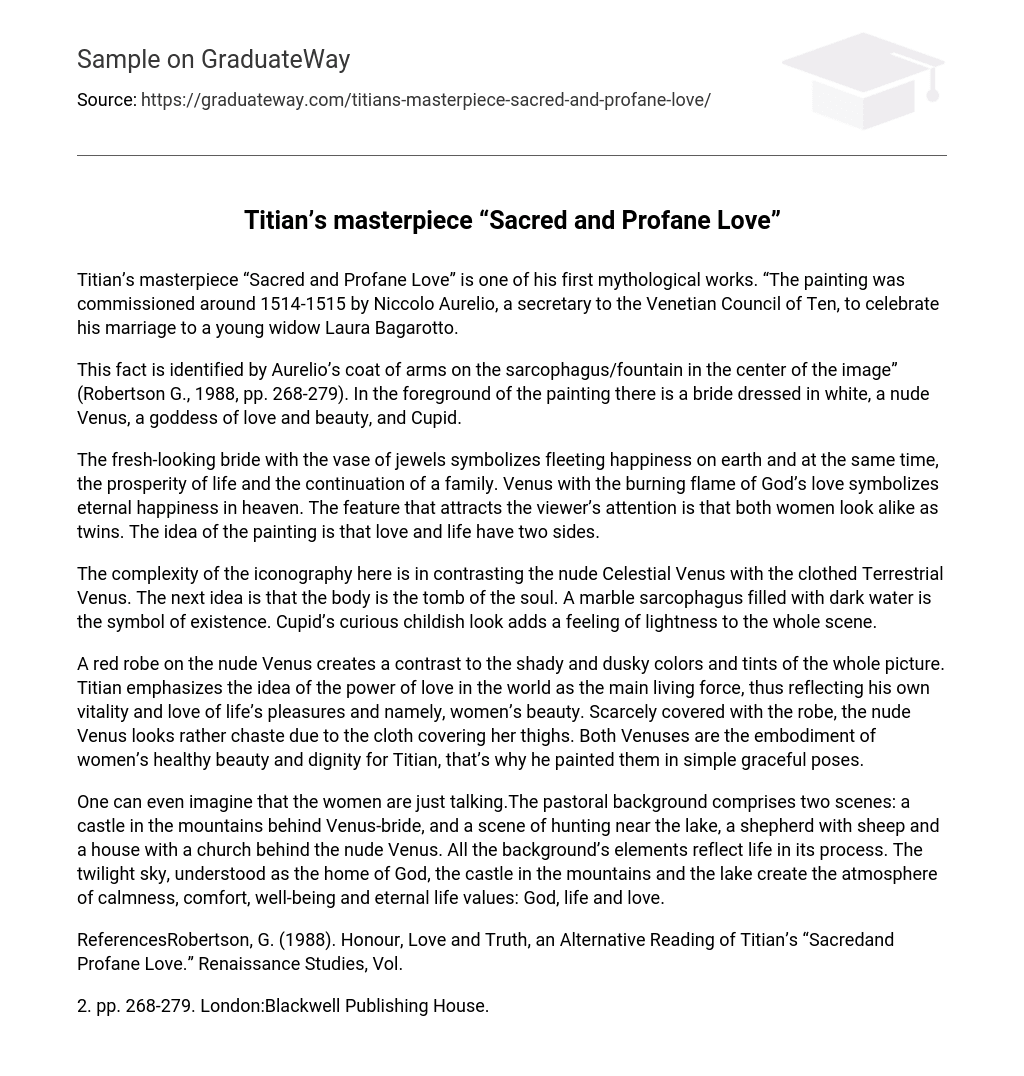Titian’s masterpiece “Sacred and Profane Love” is one of his first mythological works. The painting was commissioned around 1514-1515 by Niccolo Aurelio, a secretary to the Venetian Council of Ten, to celebrate his marriage to a young widow Laura Bagarotto.
This fact is identified by Aurelio’s coat of arms on the sarcophagus/fountain in the center of the image” (Robertson G., 1988, pp. 268-279). In the foreground of the painting there is a bride dressed in white, a nude Venus, a goddess of love and beauty, and Cupid.
The fresh-looking bride with the vase of jewels symbolizes fleeting happiness on earth and at the same time, the prosperity of life and the continuation of a family. Venus with the burning flame of God’s love symbolizes eternal happiness in heaven. The feature that attracts the viewer’s attention is that both women look alike as twins. The idea of the painting is that love and life have two sides.
The complexity of the iconography here is in contrasting the nude Celestial Venus with the clothed Terrestrial Venus. The next idea is that the body is the tomb of the soul. A marble sarcophagus filled with dark water is the symbol of existence. Cupid’s curious childish look adds a feeling of lightness to the whole scene.
A red robe on the nude Venus creates a contrast to the shady and dusky colors and tints of the whole picture. Titian emphasizes the idea of the power of love in the world as the main living force, thus reflecting his own vitality and love of life’s pleasures and namely, women’s beauty. Scarcely covered with the robe, the nude Venus looks rather chaste due to the cloth covering her thighs. Both Venuses are the embodiment of women’s healthy beauty and dignity for Titian, that’s why he painted them in simple graceful poses.
One can even imagine that the women are just talking.The pastoral background comprises two scenes: a castle in the mountains behind Venus-bride, and a scene of hunting near the lake, a shepherd with sheep and a house with a church behind the nude Venus. All the background’s elements reflect life in its process. The twilight sky, understood as the home of God, the castle in the mountains and the lake create the atmosphere of calmness, comfort, well-being and eternal life values: God, life and love.
References
- Robertson, G. (1988). Honour, Love and Truth, an Alternative Reading of Titian’s “Sacredand Profane Love.” Renaissance Studies, Vol. 2. pp. 268-279. London:Blackwell Publishing House





